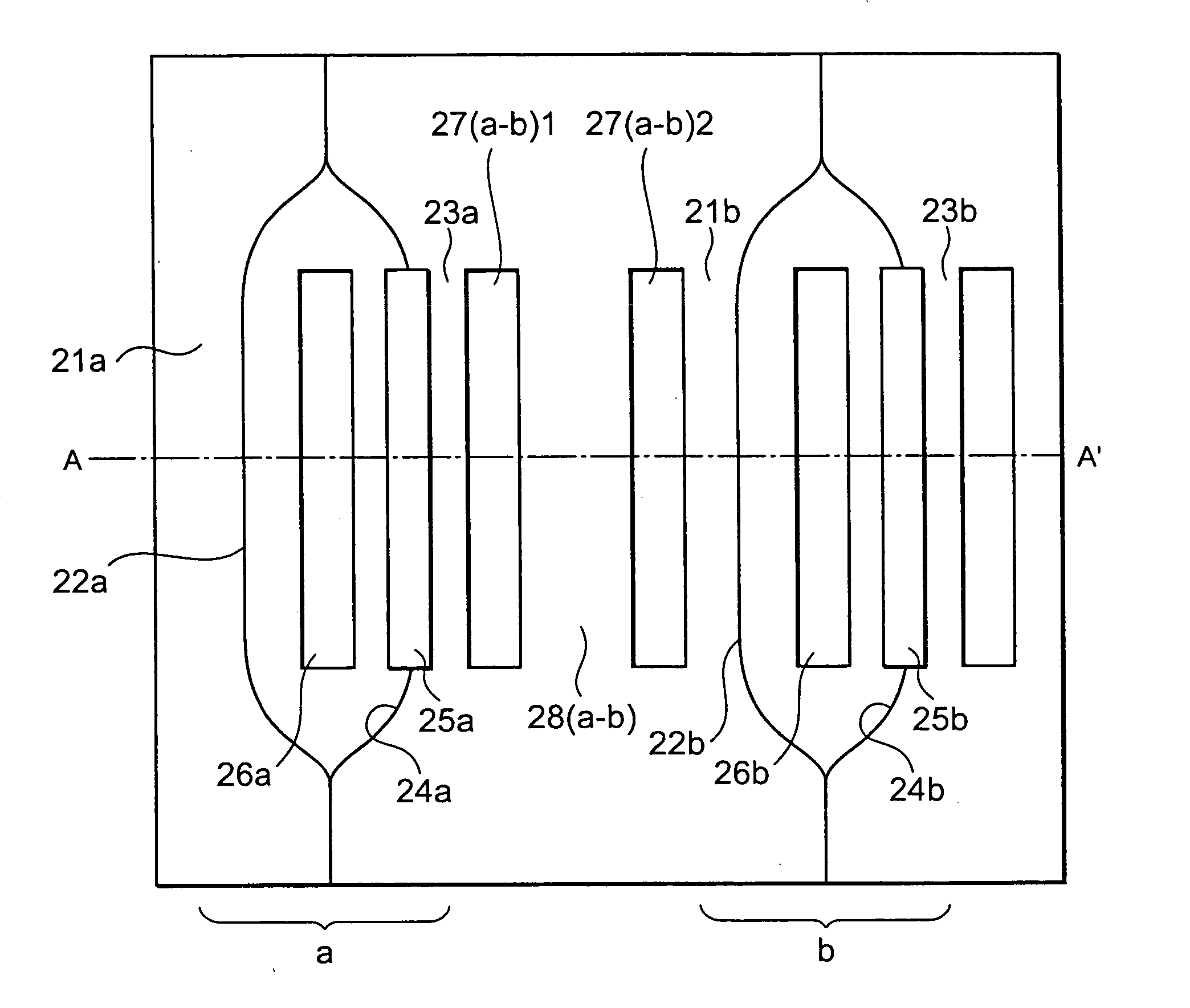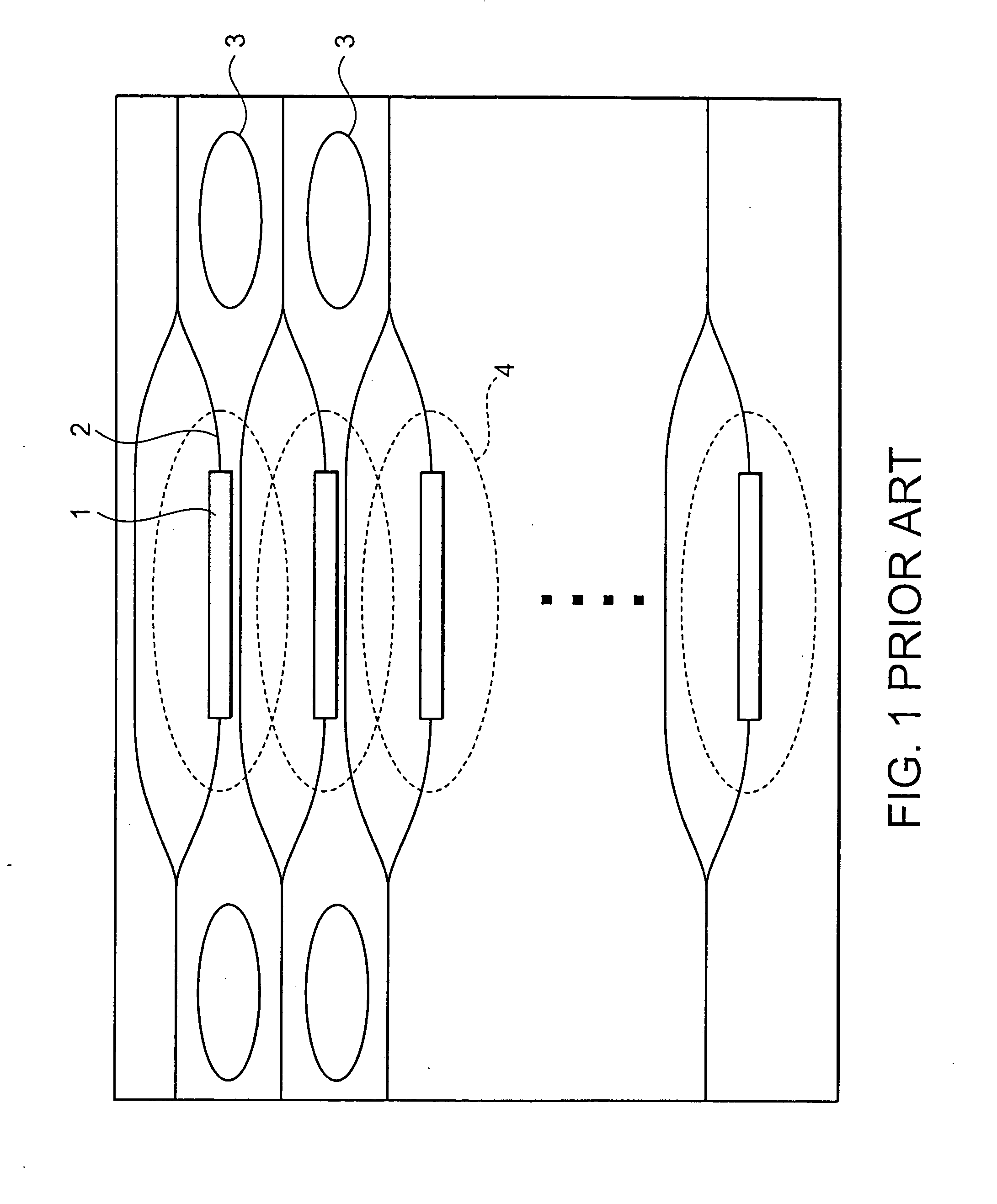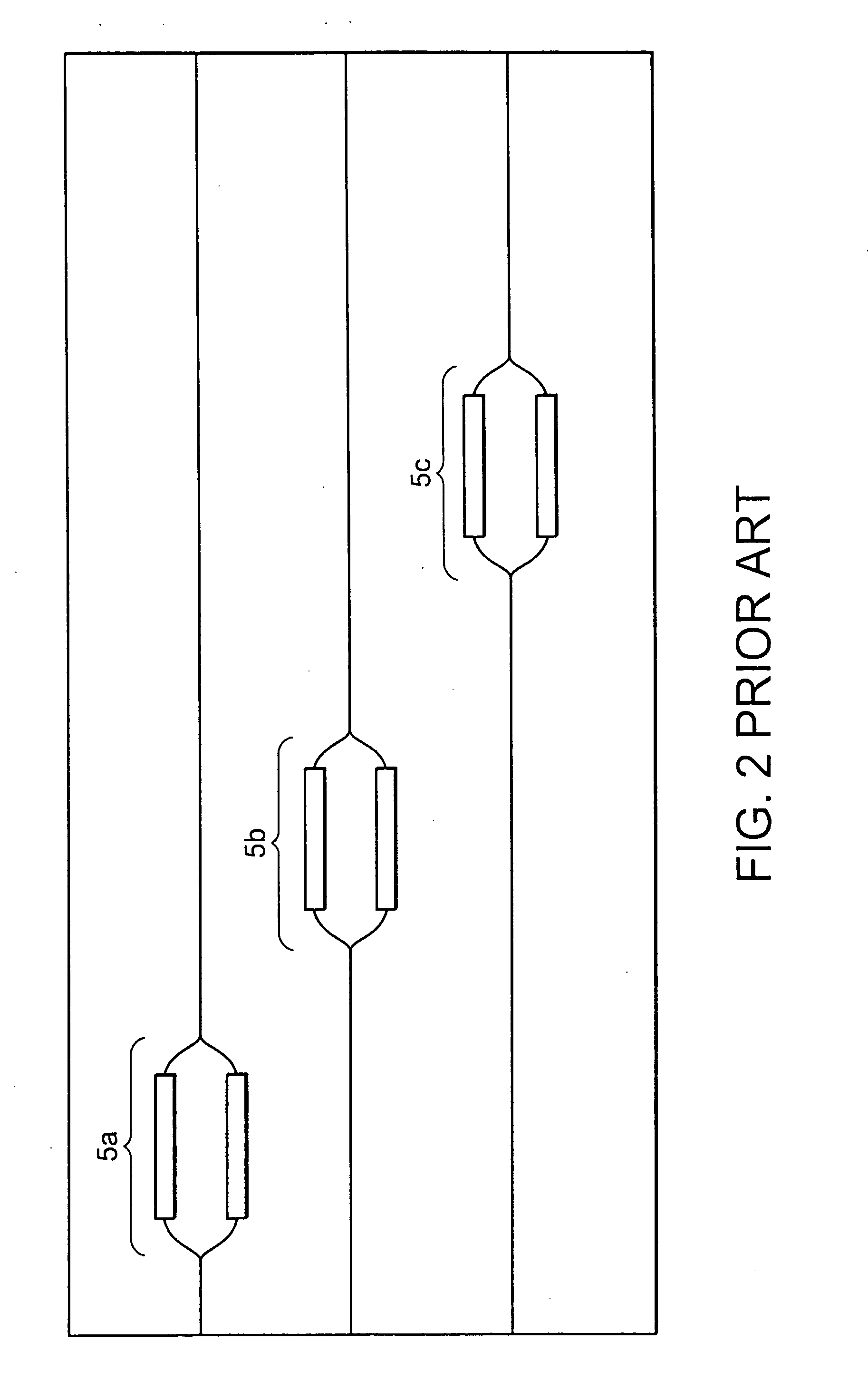Multi-channel Mach-Zehnder interferometer type optical circuits for restraining heat interference of adjacent channel
a multi-channel, interferometer-type technology, applied in the direction of optical light guides, optical waveguide light guides, instruments, etc., can solve the problems of difficult control of signal light quantity to a desired value, unintended temperature rise in the waveguide arm, and high cost of multi-channel mach-zehnder interferometer-type optical circuits. , to achieve the effect of reducing power consumption, reducing heat interference, and reducing heat interferen
- Summary
- Abstract
- Description
- Claims
- Application Information
AI Technical Summary
Benefits of technology
Problems solved by technology
Method used
Image
Examples
Embodiment Construction
[0048] The description will be made of a preferred example of the Mach-Zehnder interferometer type optical circuit according to the present invention.
[0049] Hereinafter, the description will be made of the Mach-Zehnder interferometer type optical circuit shown in FIGS. 5a and 5b. FIG. 5a is a plan view showing the Mach-Zehnder interferometer type optical circuit according to the present example, showing two Mach-Zehnder interferometers a, b. FIG. 5b is a cross-sectional view taken on line A-A′ of FIG. 5a. Reference numeral 21a, 23a designates a cladding layer of a waveguide arm of a Mach-Zehnder interferometer a; 22a, 24a, a core of the waveguide arm of the Mach-Zehnder interferometer a; 25a, a temperature controller; and 26a, a groove between two waveguide arms. Reference numeral 21b, 23b designates a cladding layer of a waveguide arm of a Mach-Zehnder interferometer b; 22b, 24b, a core of the waveguide arm of the Mach-Zehnder interferometer b; 25b, a temperature controller; and 2...
PUM
| Property | Measurement | Unit |
|---|---|---|
| distance | aaaaa | aaaaa |
| thickness | aaaaa | aaaaa |
| length | aaaaa | aaaaa |
Abstract
Description
Claims
Application Information
 Login to View More
Login to View More - R&D
- Intellectual Property
- Life Sciences
- Materials
- Tech Scout
- Unparalleled Data Quality
- Higher Quality Content
- 60% Fewer Hallucinations
Browse by: Latest US Patents, China's latest patents, Technical Efficacy Thesaurus, Application Domain, Technology Topic, Popular Technical Reports.
© 2025 PatSnap. All rights reserved.Legal|Privacy policy|Modern Slavery Act Transparency Statement|Sitemap|About US| Contact US: help@patsnap.com



